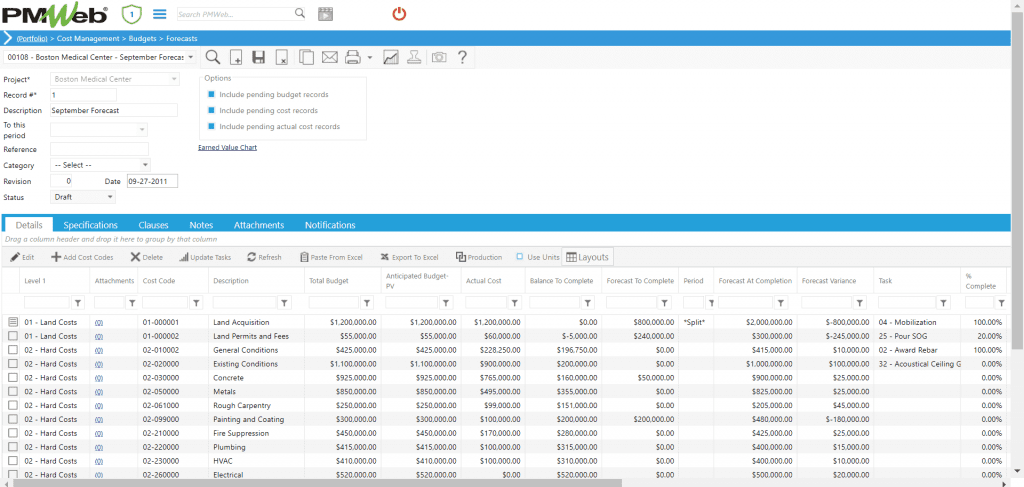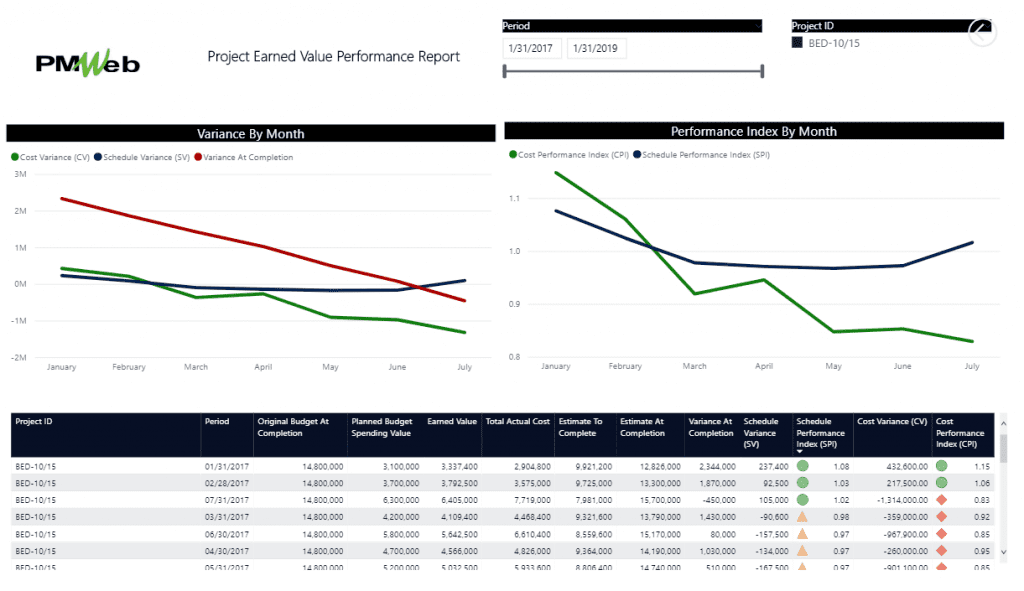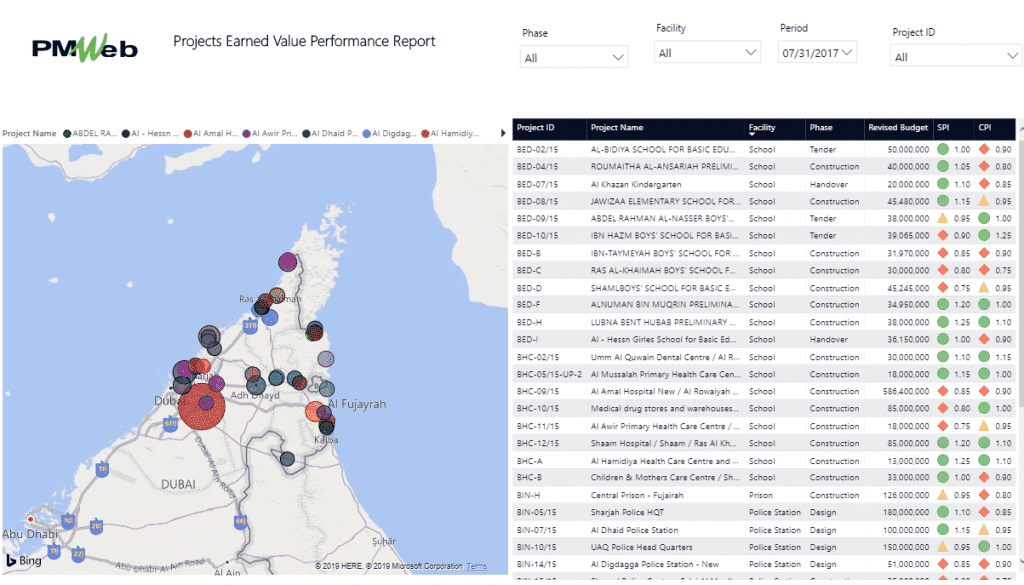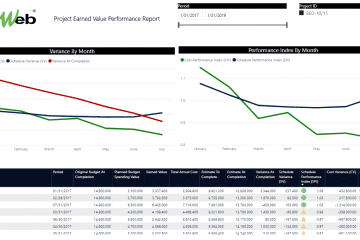For those involved in delivering capital projects they are always keen on ensuring that their approved project budget is respected and the project actual cost should never exceed this budget, otherwise the project is a loss. The Earned Value Method (EVM) is one of the proven project management techniques used for monitoring and controlling the project performance budget as well as provide a trusted technique to forecast the expected cost at completion. The concept of EVM is based on managing four variables, the project approved budget (BAC), the actual project cost for completed scope of work to date (AC) and the earned budget performance for completed scope of work to date (EV).

Project management information systems (PMIS) like PMWeb provides the organizations with a single integrated platform to monitor, evaluate and report the project’s earned value performance. PMWeb budget and progress invoices modules will provide the needed data for PMWeb forecast module to run the earned value analysis for performance period. The budget module will provide the Budget at Completion (BAC) and the planned Budget Value (PV), the progress invoices module will provide the Actual Cost (AC) while the forecast module will calculate the Earned Value (EV) from the imported project schedule activities’ percent complete values multiplied by the Budget at Completion (BAC) for each cost item. PMWeb forecast module also maintains the history of earned value values and results for each period of the project life cycle duration.
The approved budget also known as Budget at Completion (BAC), needs to be aligned with the project’s execution schedule to provide the planned budget value (PV) for each project period. It is important that project budget is also aligned with the project commitments as the actual cost (AC) will be charged against the awarded commitments through the monthly progress invoice. The earned value (EV) for each WBS level is the budget value (BAC) for that level multiplied by the approved period percent complete for the same level. The percent complete is usually the approved percent complete reported in the current project schedule for the same WBS level. PMWeb will import the updated project schedule at the end of each progress period to capture the percent complete as reported in the approved updated project schedule.
The first metric that earned value provides is the schedule variance (SV) metrics which is a metric that details if the actual budget spending (EV) is aligned with planned budget spending (PV). A negative value will indicate a delay in spending the allocated budget which is not favorable. Another related metric is the schedule performance index (SPI) which reflects the efficiency in spending the allocated budget as of today. The third metric is the cost variance (CV) which is the variance between the earned budget value (EV) for completed works and the actual cost for completing the same works (AC). A negative value indicates that the cost for completing the relevant WBS level or project component exceeds its value which is not favorable. Another related metric is the cost performance index (CPI) which reflects the efficiency in maintaining the project’s value.

The other earned value management metrics will be calculated in the output report. The first of those metrics will be the estimate to complete (ETC) which is the difference between the project budget (BAC) and the earned value (EV). The calculated could be adjusted to reflect the anticipated performance trend should it differ to what was originally planned. There are different options for this possible adjustment as some might divide the ETC by the cost performance index (CPI) or by combining the cost performance index with the schedule performance index (CPI X SPI) or any other approved factor.
The second calculated metric is the estimate at completion (EAC) which equals the actual cost to date (AC) plus the estimate to complete (ETC). The last metric is the variance at completion (VAC) which is the difference between the current approved budget (BAC) and the forecasted estimated cost at completion (EAC). A negative value indicates that the project’s actual cost will exceed the approved project budget.
Reporting the Project’s Earned Value Performance
The captured project’s performance data can be designed in different form and format to Fulfill the organization’s reporting requirement. Nevertheless, the one that is used most is a report that details the earned value method key values for each period which include the approved budget at completion (BAC), planned budget value for the current period (PV), earned value for completed works (EV), total actual cost to date (AC), estimated cost to complete the balance of the works (ETC) and project estimate at completion (EAC). In addition, the report will display the variances at each period those being the schedule variance (SV), cost variance (CV) and the estimated cost variance at completion (VAC). Further, the report will display the schedule performance index (SPI) and cost performance index (CPI) for the same periods. The report will also display the variances and performance indices trend charts.

In addition, the organization could monitor, evaluate and report on the variances and indices across the organization’s complete projects portfolio or selected projects that could be part of a program or any other attribute like location, type, sponsor among others. The organization might display the earned value as a scorecard or link it to a map that will display the location of the selected projects as well as the performance indices. The size of the bubble on the map could be used to reflect the project’s approved current budget.




